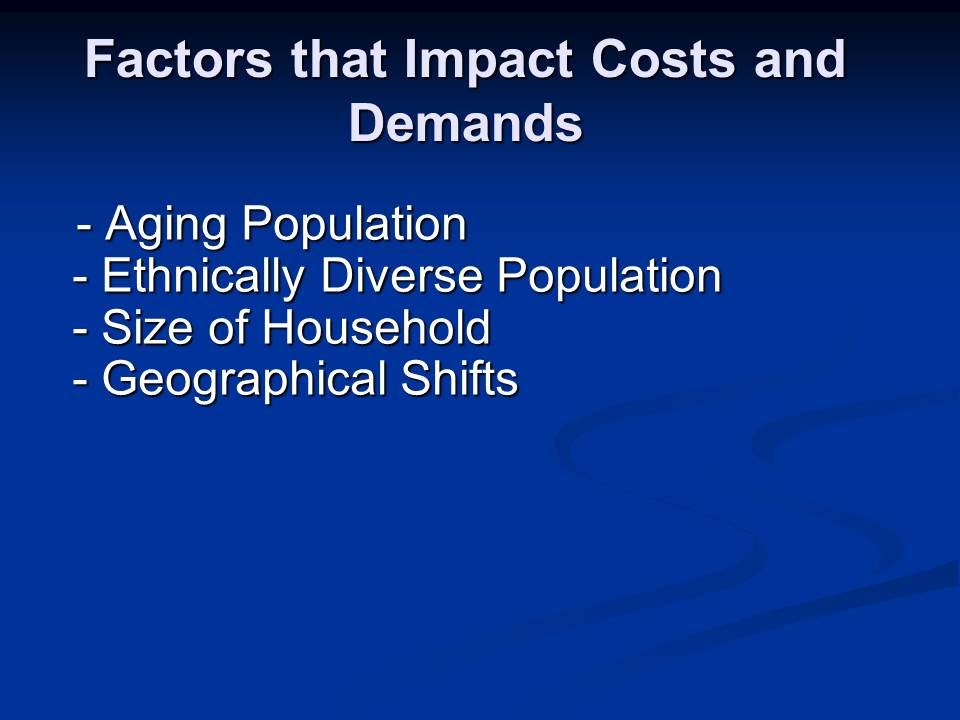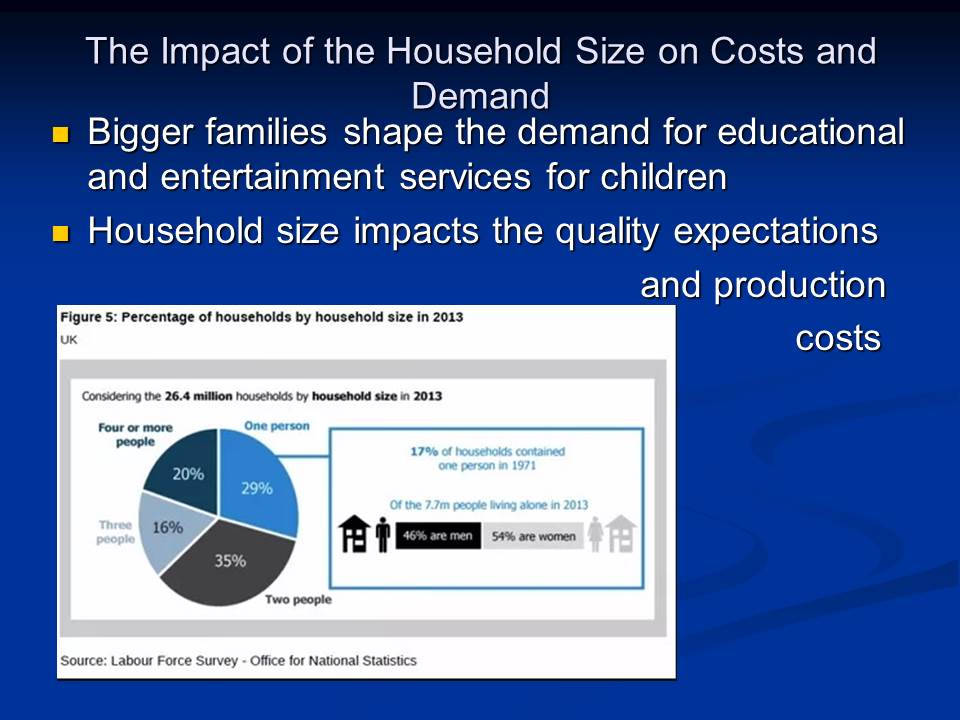Factors that Impact Costs and Demands
- Aging Population;
- Ethnically Diverse Population;
- Size of Household;
- Geographical Shifts.
In the modern world, costs and demand levels of businesses are impacted by numerous factors that refer to life expectancy rates, ethnic composition, geographical shifts, and household size. All these factors have a significant impact on businesses on different levels as they encourage service providers and manufacturers to implement new approaches to advertising, increase the quality of products, and meet the needs of people with different cultural and religious background.

Aging Population
- Population graying urges numerous companies to change their approach to advertising (impulse buying is less typical for older adults);
- Aging population decreases the demand for entertainment services and increases the demand for medicinal drugs and dietary products.
As is clear from the graph, the average life expectancy continues to increase both in countries with developing and developed economies, and it has a significant impact on costs and demand in the world of business. It is known that older adults are extremely different from young people and teenagers in terms of the approach to purchase decisions. For instance, it is much more difficult to encourage older adults to buy products that are easy to live without as they are not attracted by bright advertisements. Older people shape the demand as they are willing to buy multi-purpose products, facilitating their everyday life. Therefore, costs and demands are impacted by this factor as many manufacturers and service providers have to focus on the utility of products rather than on their unique design.
Also, the influence of this factor encourages businesses to change the approach to advertising that can involve additional costs. The principle “sex sells” and various attractive images are less effective for the older audience, and the demand for entertainment services gradually decreases due to the impact of this factor.

Ethnically Diverse Population
- Ethnical diversity can increase the demand for translation services and language courses;
- Ethnical diversity is about religious diversity that shapes the demand for alimentary products, media products, clothing, etc.;
- Ethnic wage differences can decrease operating costs in manufacturing companies.
Ethnical diversity can impact costs and demand in numerous ways. First, the growth of ethnical diversity is associated with the growing demand for products and services that help ethnic minorities to both observe their cultural traditions and assimilate into communities with different cultures. For instance, ethnical diversity may result in an increased demand for language courses, document translation services. The changes may apply to businesses related to food-manufacturing industry as well. For example, ethnical diversity involves religious diversity, and in some popular religions such as Islam and Hinduism, eating certain types of meat is forbidden. Therefore, ethnical diversity can impact the demand for alimentary products as well.
The costs may be impacted both positively and negatively. Some business owners manage to decrease operating costs, employing the representatives of ethnic minorities who often present the low-wage workforce.

The Impact of the Household Size on Costs and Demand
- Bigger families shape the demand for educational and entertainment services for children;
- Household size impacts the quality expectations and production costs.
Household size is another factor that impacts costs and the demand levels of businesses as the presence of bigger families usually increases the demand for products and services for children. The growing percentage of childless families and single people significantly decreases the demand for family services. Production costs in many fields of business tend to increase as childless people are ready to buy more expensive products of everyday use and, therefore, they want to get products of a higher quality.

Geographical Shifts and Business
- Hiring specialists from more developed countries increases operating costs;
- Geographical shifts impact paying capacity, which defined the demand for non-essential products.
Geographical shifts are closely interconnected with another factor such as ethical diversity. They often involve migration that can increase the demand for embassy documents services. Production costs may increase in many areas of business as hiring experienced specialists from more developed countries is rather expensive.
Geographical shifts can be both positive and negative for the demand in many spheres. For instance, positive shifts usually increase the paying capacity of the population, increasing the demand for non-essential products.
